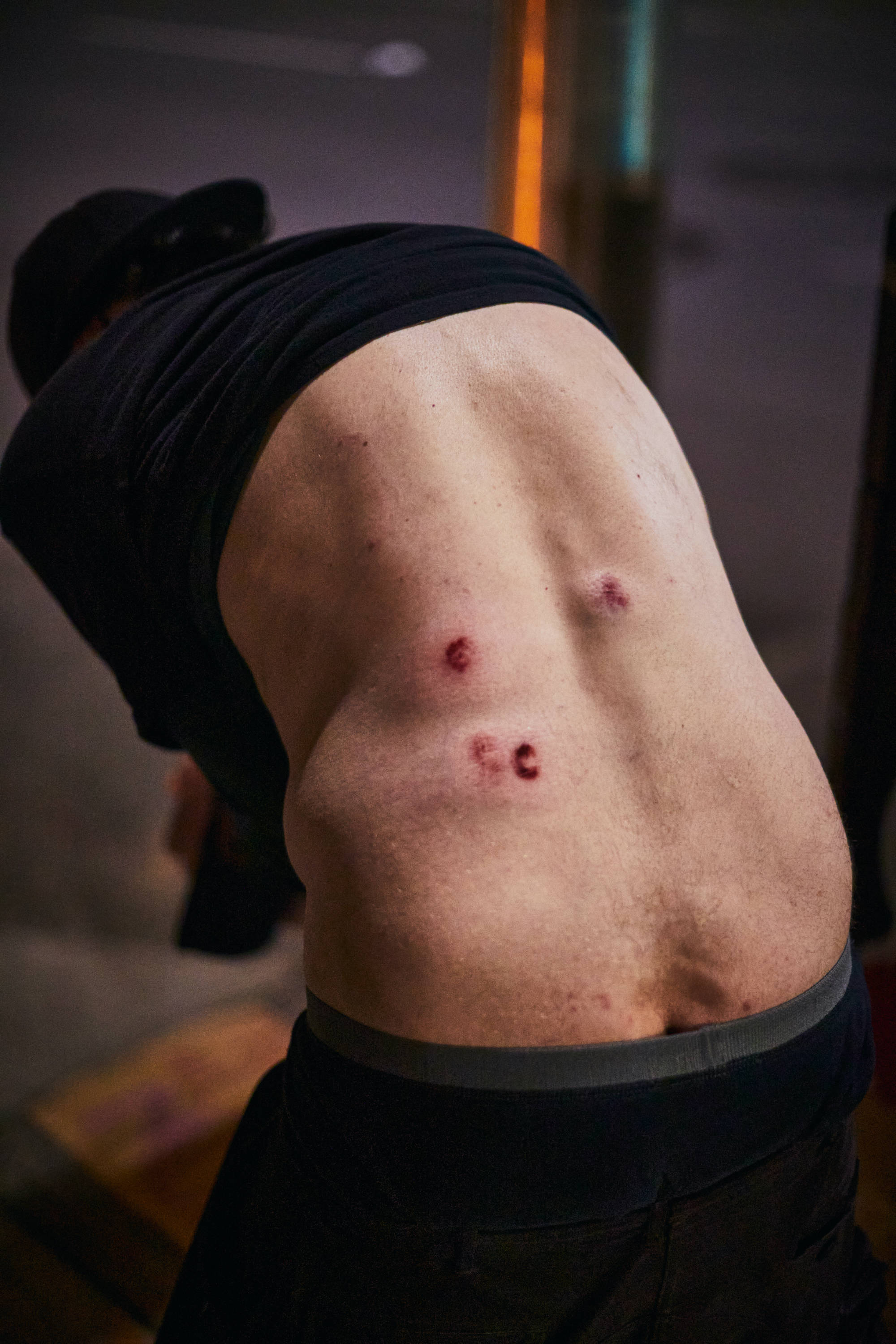Last Updated on 08/29/2020 by Dan Ginn
This is the second installment of our series focusing on the Portland protests.
The on-going tension between the people of Portland and its law enforcement has been a polarizing topic in America. Some feel the aggression from the police is justified, viewing it as a direct response to violence committed by a section of the protesters. On the flipside, many believe this is a total abuse of power by those employed to protect and serve. Naturally, events such as this attract wide media attention. A major part of the coverage is photography, something we, of course, want to focus on. Amidst the Portland Protests, there was a photojournalist who was shot in the chest.
In this second installment following the Portland protests, we speak to photographer JD Barnes. You can read the first part of this series here.
The Portland Protests
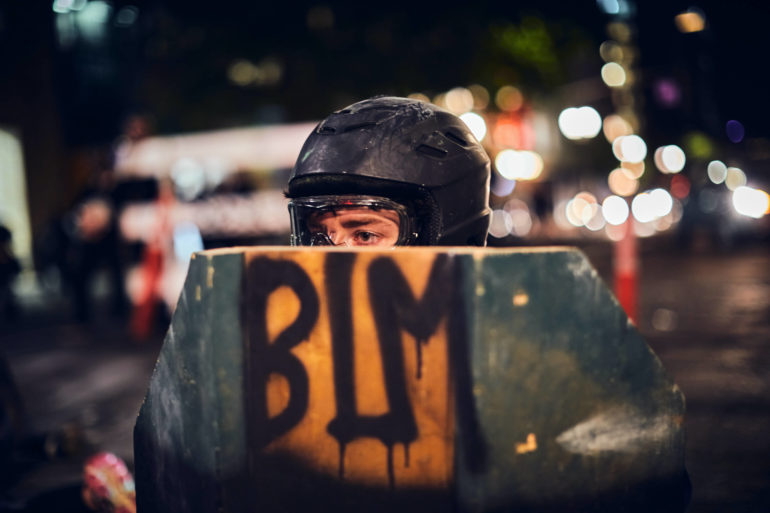
Amongst civilians, photographers have been hit with non-lethal bullets, gas, and batons by the police. Anyone who enters the streets of Portland is at risk. But photographers still go: they know it’s important. Barnes shared how he felt going into a zone where potentially he could be harmed.
“As a black photographer, I think that feeling is something that I kind of live with. Ultimately the job needed to be done, and I think that from my perspective the rewards of being there and capturing history especially from a black person’s perspective, outweighed the risk of being out there.”
— JD Barnes
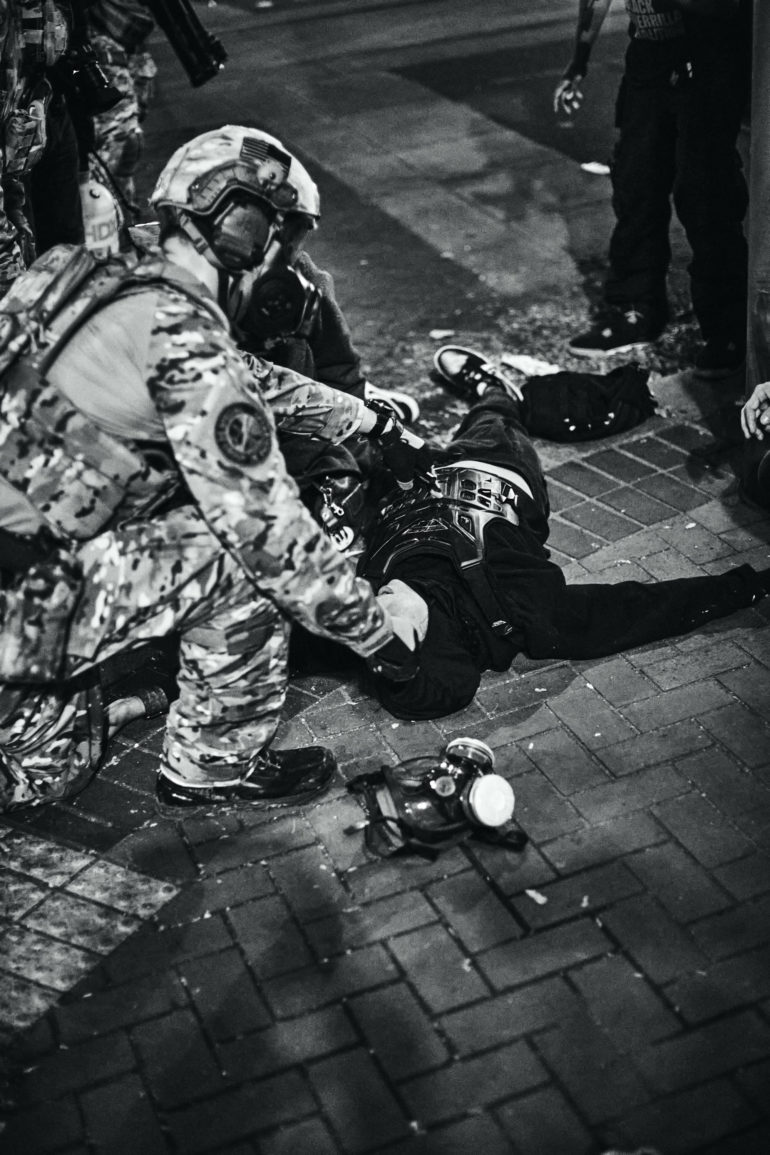
Unfortunately, Barnes was unable to leave the protests unharmed. Prior to going to Portland, he photographed the protests in New York. After getting lost in a sea of protesters, he attempted to find a safer spot. While doing so, he came in the path of three police officers. Barnes says that while one firmly told him where to go, the two other offers used physical force. “As I was moving, another officer came up and pushed me, and another gave me a pretty solid whack with his baton across my leg,” he tells us. “Ultimately I got out of it but I wore that bruise for a couple of days for sure, and will never forget it.”
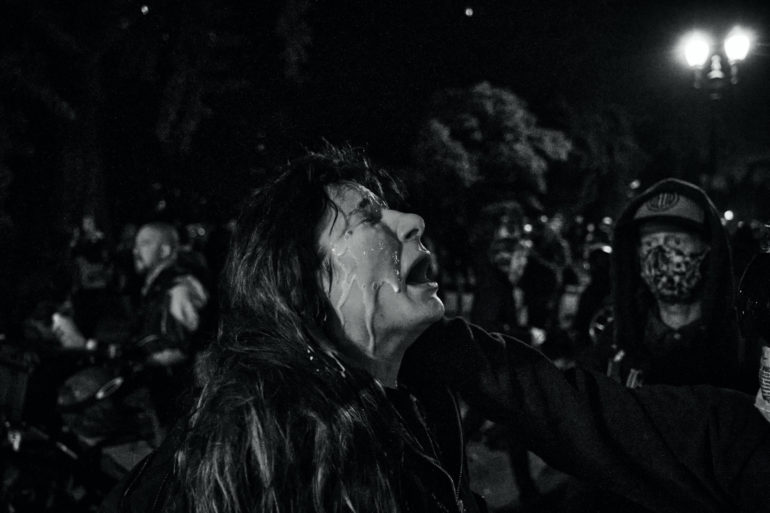

Shot by Police During the Portland Protests
Barnes goes into greater detail about the terrifying experience he had in Portland.
“The second major altercation I had was in Portland, Oregon. The protestors there are a different breed, and at the time were very angry and determined to resist the federal presence in their city, specifically at the federal courthouse. The feds had erected a fence around the courthouse and the protestors were determined to tear it down. On day three they succeeded in tearing it down. The feds responded with a massive amount of tear gas and flashbang type ordinance. They drove the protestors several blocks up from the site. I was in a large crowd of protestors moving up a street, eyes still half-blind from the tear gas, and as I turned around to get my bearings, I saw sparks heading directly towards me. In a split second, I was hit in the chest with what I later learned was a smoke grenade shot from a 40mm grenade launcher.”
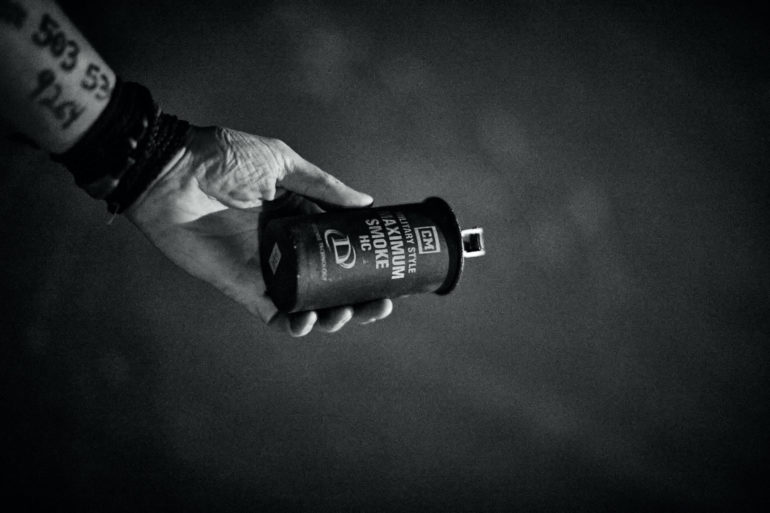
“That one left a scar I see daily. That entire moment is indelibly seared into my consciousness. Not only because of the scary feeling of not knowing at that moment if I was going to be permanently injured or killed, but the randomness of it all. I was in a big crowd. I wasn’t being antagonistic, anybody could have been hit. But here I am, a photojournalist, shot in the chest by federal ordinance. It was wild.”
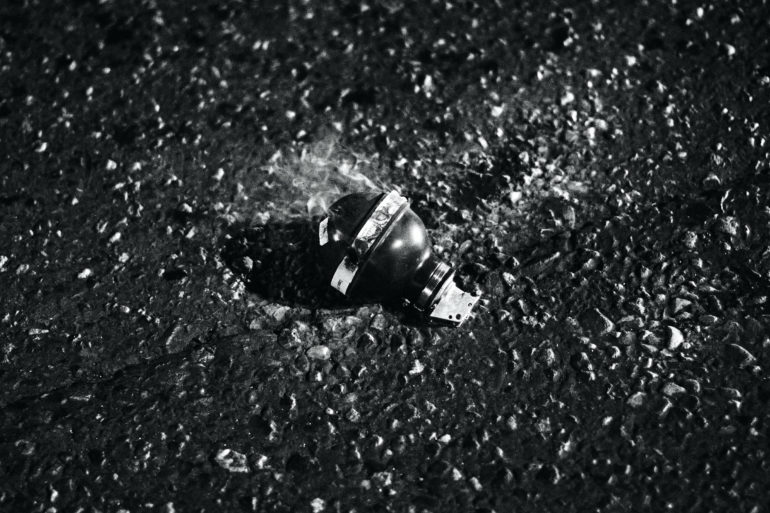
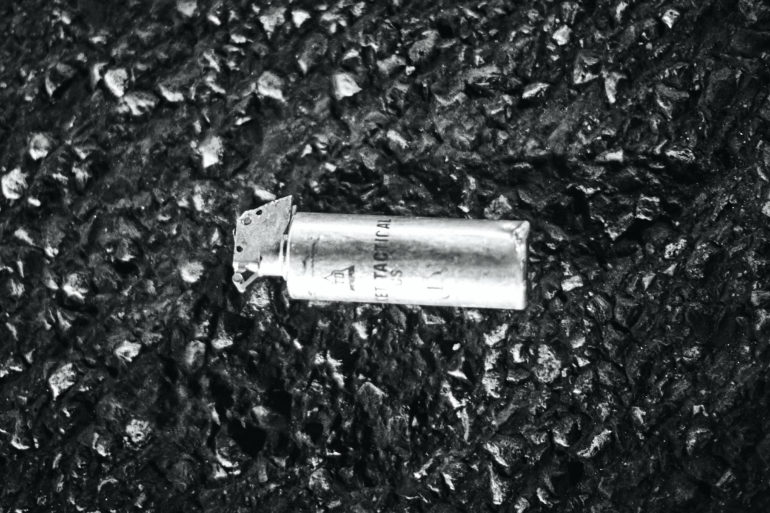
Unnecessary Force During the Portland Protests
Asked if the police presence felt justified, he says, “police presence never feels necessary. Both here (New York) and in Portland, when their respective PDs back off the tenor of the protest always changes.”
“I know there are a lot of people who cant be out there, and I hope that they can get a sense of the experience through my images.”
— JD Barnes
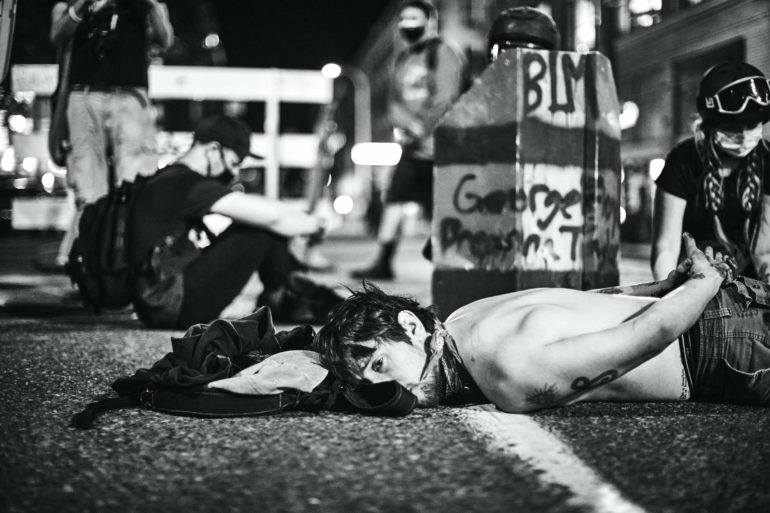
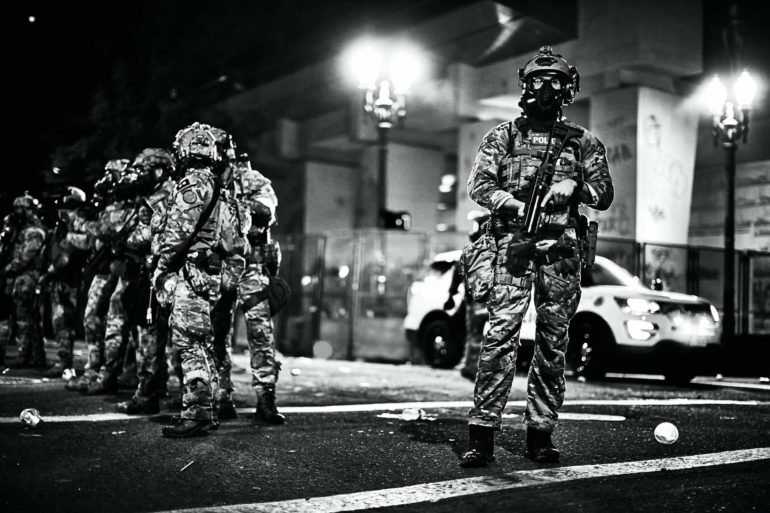
We asked Barnes what the temperament of law enforcement was like within the camp. Was each officer looking to use force? Did some show empathy and understanding? He told The Phoblographer, “I think the various law enforcement that I have been in contact with have an interesting mix of individuals. Some who you can tell are just trying to get through the day and back to their families, and some who you get the feeling genuinely want to hurt you.”
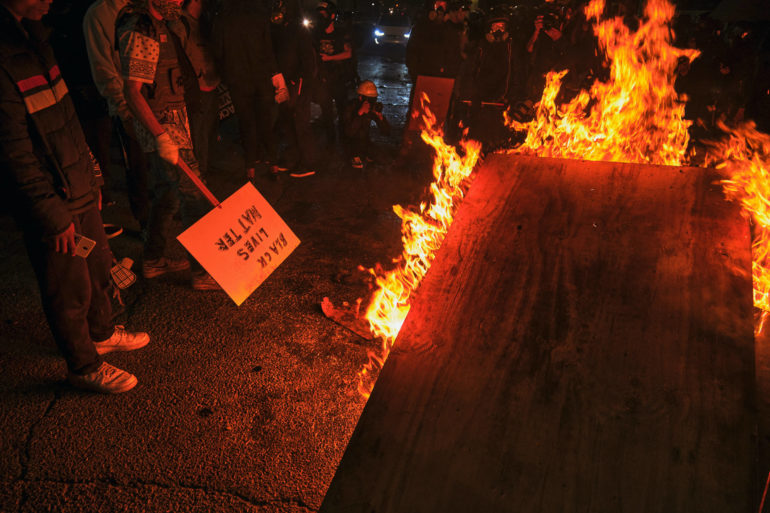
The Importance of Photojournalism
For the section of the police that choose to go with force and brutality, Barnes feels that choice is unsubstantiated in certain instances. “I’ve seen people with their hands up being tased. I saw people’s arms broken by police batons. I saw people maced from point-blank range.” He adds, “I’ve heard officers try and bait people into reacting to their words by fighting while having body armor and weapons and dozens of officers all around them. How is that fair or necessary?”
Despite his experience, Barnes was determined to stick to the task. He wanted to show the world the reality of what Portland, and America, are facing right now. “My one goal both then and now is to capture the truth of the moment.” In closing, he says, “I know there are a lot of people who cant be out there, and I hope that they can get a sense of the experience through my images.”
You can see more of JD’s work by visiting his website.


